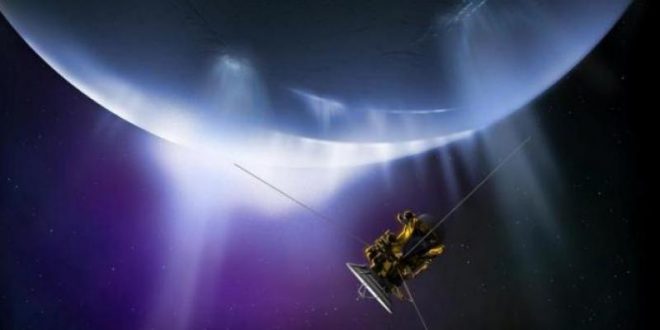Launched 20 years ago, NASA’s Cassini spacecraft now has less than 20 days for its mission-ending dive into the atmosphere of Saturn.
On September 15, after a distant flyby of Titan, Saturn’s largest moon, Cassini will descend into the planet itself, burning up while transmitting atmospheric data back to Earth. It will enhance our understanding of the Saturn system until the last possible second.
As with any ending, it’s only natural to look back at where you’ve been. If you could see the end of your life approaching, would you have regrets? How would you live differently, knowing what you know now? Would you do it all the same again, savoring every missed opportunity and misstep, since they made you what you are today? Or would you live differently, with less caution and more gusto, seizing every opportunity no matter how risky?
You’re not alone. In a teleconference with reporters on Tuesday, Cassini program scientist Curt Niebur, project manager Earl Maize, and project scientist Linda Spilker a shared few of their thoughts on the things they’d like to do now that Cassini is ending. Some ideas are wishful thinking for if they could do it all over again, while some are ways they’d like to expand in future missions on discoveries they made with Cassini.
Cassini orbited Saturn for nearly 13 years before venturing into the gap between the planet and its signature rings. Only during the orbiter’s Grand Finale of weekly dives through the gap did scientists realize the truth about it. This region, which they predicted would be chaotic, turned out to be nearly empty.
“As it turned out, the dust we thought was [between rings and Saturn] was remarkably missing and we were able to relax our shielding,” Maize told reporters. “Given how benign this environment is, it’s something we could have jumped into much sooner in the mission. Now that we know, it’s a place we’d be very happy to spend more time.”
In 2005, during Cassini’s earliest days, it sent the Huygens probe down to Saturn’s largest moon, Titan. There, Huygens captured video of Titan, showing humans a landscape shaped by flowing methane, littered with “rock” of solid water. In April 2017, Cassini flew through the geyser at the south pole of the icy moon of Enceladus, where it detected molecular hydrogen, evidence of possible microbial life. These findings were just a taste of the possible experiments to conduct on these moons, so it makes sense that the scientists would want to get another taste.
Agencies/Canadajournal
 Canada Journal – News of the World Articles and videos to bring you the biggest Canadian news stories from across the country every day
Canada Journal – News of the World Articles and videos to bring you the biggest Canadian news stories from across the country every day



